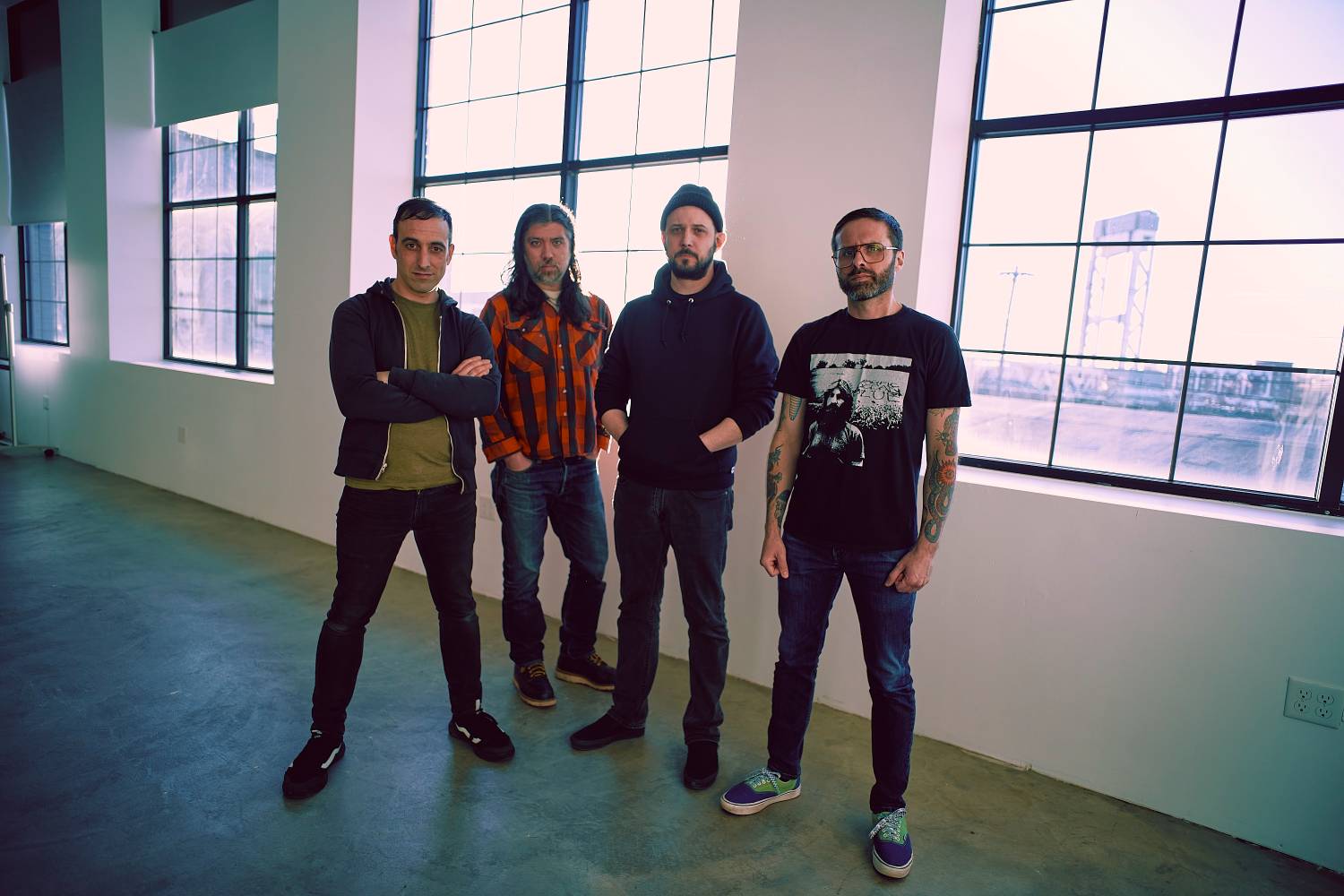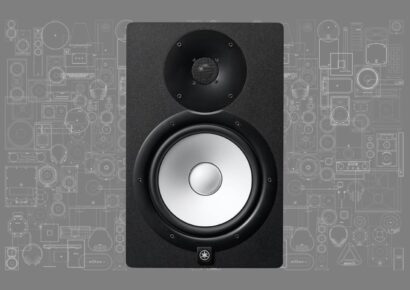Cave In transcend genre and are a hugely influential band in the hardcore, metalcore and punk space.
Beginning in Massachusetts in 1995 amongst peers Converge, Bane and American Nightmare, Cave In was formed by guitarist Stephen Brodsky and vocalist Jay Frechette.
Stephen Brodsky
While having undergone a few lineup changes in their almost 30-year career, Cave In will appearing in Australia for the first time in June with The Ocean, German metalcore pioneers in their own right.
Ahead of the tour, we spoke to Cave In’s Stephen Brodsky, “if you wanna be biblical, Stephen, otherwise if you wanna save some time, one syllable instead of two, Steve.” he laughs.
We dive straight in, speaking to Cave In’s influence as well as the pressure they might feel when writing new material, their most recent album, 2022’s Heavy Pendulum receiving huge critical acclaim.
Read all the latest features, columns and more here.
“To an extent [we feel pressure], in that we more or less have been active as a band for the entirety of our existence, with the exception of a few years around 2004 to 2009 or so.”
“But we’re also an insular bunch, so we’re not too concerned with what other people are thinking or feeling. I think that helps us stay focused.”
“If you’re insinuating that we’ve had some effect on people or bands, then that’s super cool.”
Steve is humble, and while not totally aloof to the influence that bands like his have had on modern hardcore and metalcore, he’s also so focused on his own path. But I have to know – does the influence come with pressure when making new music?
“With Nate (Newton, of Converge) having joined the band, it feels like a fresh start.” he begins. “We’re very lucky that Nate wanted to engage as much as he does in the creative process, and all the logistics that go into being in an active band.”
“But a bit like the answer to my last question, we’re so wrapped up in ourselves that we don’t think too much of that sort of thing.” he smiles. “But yeah, there’s always the challenge of wanting to challenge ourselves or not get bored, that’s the fun of it.”
“Every record that you do as an artist, no matter who you are, is a blank slate. This world of art and music is really whatever you want it to be.”
I love this sentiment, and I let Steve know. A lot of artists are very concerned with what their fans will think, sometimes rightly so, but this all ultimately impacts the creative process and eventual result. It’s cool that Cave In are, for lack of a better term, just ‘making the thing’.
“It’s fair to consider other people’s feelings, you wanna make recordings that sound good that don’t detract from the songs and the writing. We want our stuff to look good, working with an artist like Richey Beckett for that reason, and all those years working with Aaron Turner and [we] worked with Jake Bannon in the early years,” he explains. “Recorded with great engineers like Kurt (Ballou) and Andrew Schnieder, Rich Costey, y’know… the list goes on.”
“It’s sort of a double edged sword, you wanna give people what they need, not necessarily what they want, but you also have to be putting forward the best presentation of it.”
Cave In – Heavy Pendulum
I change tack a bit here, speaking to Cave In trying to put forward the best presentation of their music. Heavy Pendulum, as an example, sounds like it has layers and layers of productions that sums to a huge sounding rock band – are they at all concerned with replicating that live?
“I’ve definitely been in the trap of writing stuff on the guitar with vocals over it that in practice are… y’know my mouth and my fingers just wanna do different things,” he laughs. “I’m pretty conscious of that at this point. I’ll usually play something and sing it before I commit it to—quote, unquote—‘tape’.”
“When we’re in the recording zone, there’s situations where we get wrapped up in a fun way, and we have to stop to think about how we’re going to do it live. And that’s okay, I think as long as the dominant presentation is something that we can replicate in a live setting, then I think we’re in a good spot.”
“We’re pretty comfortable with the recording process at this point. When we started the band, we had various types of recording devices at our disposal, cassette four track machines, later at some point digital, so we find that we learn things about ourselves when we record. And we record a lot. Demos of demos, there’s a whole lead up to the making of a record, and it’s good to know when you’re slowing things down in a way that detracts from the song, or speeding up things for that same reason.”
Steve goes on to explain that their early demos were done often with a four track machine, little or no isolation between drums and guitars, the muddiness of the resulting sound is cool and charming, but it also masks detail and blurs over things.
Moving on to more involved recording sessions with multiple mics, isolated instruments made them feel like they were under a microscope and ultimately led them to be better musicians. Steve’s perfectionism made this a hard realisation, hearing his own playing so exposed for the first time, but he also acknowledges that live performance is a whole other world, and he’ll loosen up, possibly make a few mistakes if it means he’s putting on a good show for the audience.
So what is he using live? How does it compare to what’s on the record?
“Live these days for effects, and a little bit of tone I’ve been using the [Line 6] Helix Floor.” he begins. “In the past, I’ve used pedals and everybody knows about the pedal dance” Steve says with a chuckle.
Line 6 Helix Floor
“With the Helix, you can reconfigure your pedal board for each song, and I really love that. So for a live setting, that really frees up a lot of bandwidth for me but as far as tracking goes, most of the engineers I’ve worked with would prefer either pedals or tube amps, sometimes solid state.”
“But,” he concedes, laughing “with my limited hearing at this point, I can hear a difference. I think the amp modelling is good, but it hasn’t totally surpassed what is possible in the realm of old school amplification, analogue pedals and I’m okay with that.”
“I will say: going out on tour with a Quilter amp, which I think is five or six pounds (2-3kg) is much easier on my back. People are looking at your rig, like gawking at it, going ‘Oh god that can’t sound good!’”
“I’ve had several instances of people going ‘What is that thing?! I was convinced it was going to sound like garbage until you turned it on.’ So yeah… shout out to Quilter for making amps that don’t break the back.”
We chat for a moment, discussing how amp modelling has finally crossed a threshold into being good enough to use live, while not replicating tube amps to the utmost degree, but they sound good enough to justify their use. Steve explains that they take a lot of randomness out of the equation, he can use the same settings night after night, and more or less have a similar sonic experience.
“There’s still something fun about rolling the dice, and you’re not sure what you’re gonna get night after night… but I understand that removing that chaos, it makes the whole machine run a little bit better.”
Acclaimed post-metal band THE OCEAN return to Australia this June for their first headline tour in almost a decade. Joinging them are legendary US metal/hardcore pioneers CAVE IN for their first-ever Australian shows, and insanely heavy Danish label mates LLNN. For ticket, info and more, visit Destroy All Lines.

